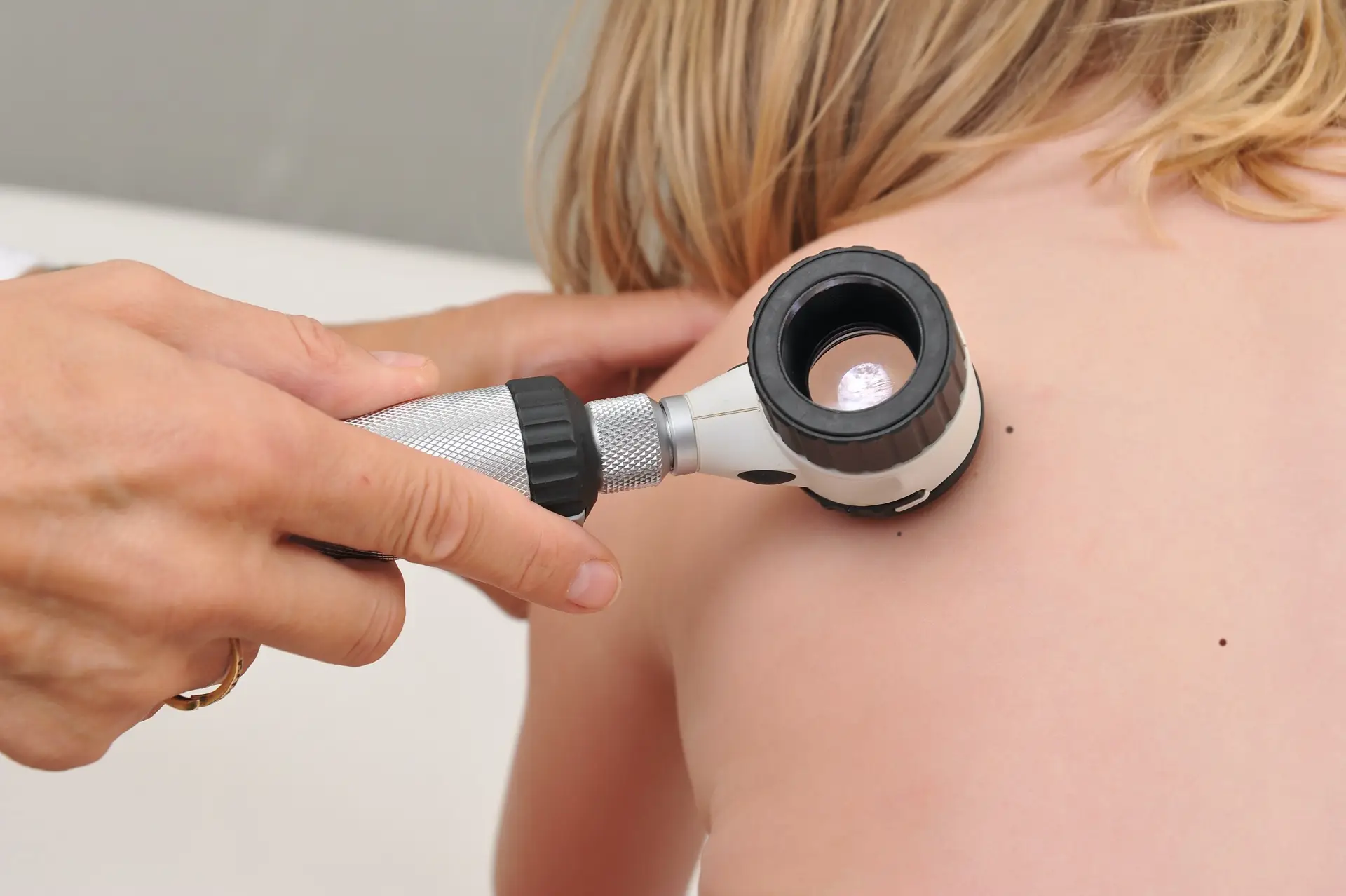-
Zadzwoń
509 105 905
22 100 12 36 -
ul. Białej Floty 2
02-654, Warszawa,
Mokotów -
Zapisy telefoniczne
pon - pt 8-19
-
Call us
509 105 905
22 100 12 36 -
Białej Floty 2 loc. 20
02-654, Warsaw,
Marina II -
Appointment registration
Mon - Fri 8-19
by phone

Evaluation of nevi – the key role of the pediatric dermatologist in the diagnosis and prevention of skin cancer
With the onset of summer, when our skin is more exposed to UV radiation, there is an increased need for awareness regarding the evaluation of nevi and the identification of potential risks associated with them. In this context, the pediatric dermatologist plays a key role in monitoring and diagnosing nevi in children for early detection of potential skin cancers, especially melanoma.
What are skin nevi
Skin nevi are congenital or acquired clusters of melanocytes, which are cells that produce melanin, the pigment that gives skin its color. In most cases, the moles are benign and non-threatening. However, some moles may exhibit features that indicate a risk of developing skin cancer. Therefore, it is important for a pediatric dermatologist to conduct a thorough evaluation of nevi and identify possible risks.
Dermoscopy – a method of diagnosing nevi
In the diagnosis of nevi in children, dermatologists often use the technique of dermoscopy. Dermoscopy is a non-invasive method that involves viewing the skin surface of nevi using a dermatoscope. It is a diagnostic tool that allows assessment of the structure of nevi, the presence of blood vessels, as well as identification of features that may indicate worrisome changes. Combined with a clinical skin examination, dermoscopy allows a more accurate evaluation of nevi and distinguishes benign lesions from those requiring further diagnosis.
Evaluation of nevi in children
When evaluating nevi in children, observation is key. Nevi can change over time, so regular monitoring is critical. If there are any worrisome symptoms, such as a change in shape, color, size, as well as the presence of bleeding, peeling or pain, a pediatric dermatologist should be consulted as soon as possible. Early detection of potential skin cancers greatly increases the chances of successful treatment and improved prognosis.
How to recognize worrying moles
There are several risk factors that may indicate the potential dangers of nevi. In the case of children, attention should be paid to nevi that show irregular edges, asymmetry, uneven color, larger diameter, evolution over time or the presence of lesions uncharacteristic of nevi. In addition, a family history of skin cancer, particularly melanoma, can affect the risk of developing skin cancer in children. Therefore, it is important for a pediatric dermatologist to conduct a thorough evaluation of nevi, taking into account both clinical and familial factors.
Nevi vs. sunlight
In the context of summer, it is important to understand that overexposure to the sun can lead to skin damage and an increased risk of developing skin cancer. That’s why it’s important to consult a pediatric dermatologist before the summer season to evaluate the moles and get advice on how to protect the skin from UV radiation.
At the Gustav – Children’s Clinic, moles and other skin diseases are consulted by an experienced pediatric dermatologist, Dr. Margaret Kostrzewa. Dr. Kostrzewa is highly qualified and experienced in pediatric dermatology, and her practice is based on the latest scientific research. Using modern diagnostic techniques and tools, Dr. Kostrzewa performs a comprehensive evaluation of nevi in children, with the goal of detecting potential skin cancers early and ensuring the safety of their patients.
In conclusion, the evaluation of nevi by a pediatric dermatologist plays a key role in the diagnosis and prevention of skin cancer in children. Early detection and monitoring of nevi, using techniques such as dermoscopy, allows early action to be taken, which can significantly improve the prognosis of patients. For any worrisome changes in nevi in children, it is recommended to consult an experienced pediatric dermatologist to get professional care and ensure the long-term health of our little ones’ skin.
